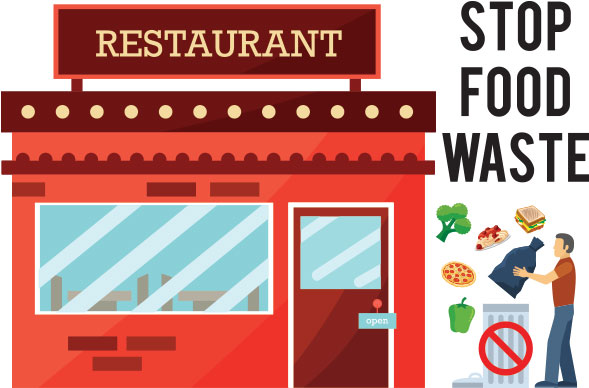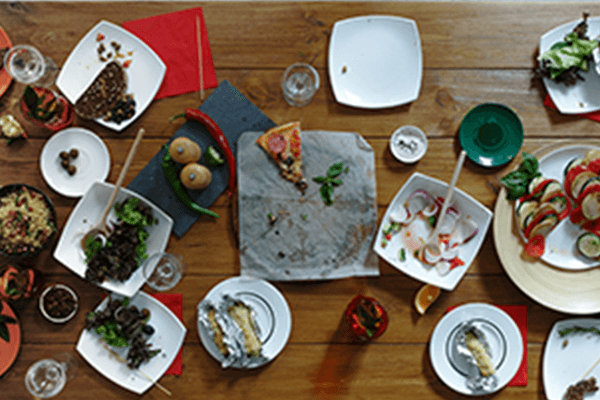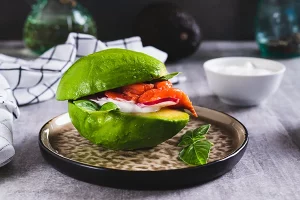As climate change issues continue to grow, people look to make positive changes to help the environment. Many are aware of the damage that comes from factory farming and because of this, they wish to reduce their meat consumption entirely. Food wastage is an area that also needs to be considered. Not only does reducing food waste help the environment, but it will also save you money in your business.
The damage due to food wastage is increasing to alarming rates and changes need to be implemented as soon as possible. Foodservice providers are well-positioned to reduce the total waste produced around the globe and it’s time for them to play an important role and be socially responsible.
For foodservice producers that use large quantities when ordering, it’s important to waste as little food as possible. Technology makes this easier with recipe building software. This software allows users to virtually build recipes to determine how much of each ingredient is needed to reduce food waste.
This article will look at the big issue of food wastage, and ways on how to reduce it.
Read more: What is a Ketogenic Diet and What does it mean for the Foodservice Industry?
A Huge Environmental Problem
Food wastage is hitting people where it hurts; their environment and their wallets. The average person in the United States is throwing out 218.9 pounds of food per year. The USDA states that 30 to 40 percent of all food ends up being wasted.
This equals 133 billion pounds of food thrown out each year valued at $166 billion. In Canada, it’s even worse. The average Canadian is throwing away 374 pounds of food per year.
On a monetary level, 40 percent of food a household throws out each year costs them nearly $1500. This is a significant amount of money lost for most families, which could be used for more important things such as fresh produce. From a health perspective, this is damaging, as without fresh produce, people are more likely to turn to quick solutions such as processed and junk foods.
Not only is this food not nourishing to people, but it’s having a serious drain on resources. Food waste is now the single largest component going into municipal landfills. All of this food wastage requires transporting, processing, preparing, storing, and disposing of. This requires land, water, labor, and energy that is taken away from other critical uses.
Food wastage is such a huge concern globally. The main environmental damage comes from preparation and decomposition. Greenhouse gasses are released from decomposing food and this damages our precious atmosphere.
Methane gas released from rotting food is 25 times more damaging as a greenhouse gas than carbon dioxide. The methane from wasted food plus the methane released from the growing, processing, and transportation of it is adding up to serious environmental damage.
Read more: The Perfect Recipe for Preparing a Great Strategy
Ways to Reduce Food Waste

With a vast majority of food wastage coming from foodservice providers, it’s time to take action and stop these practices. Proper storing will be the first step in reducing food waste. Natural food is paramount to obtain a healthy lifestyle, but there is a downside to this. Fresh produce tends to spoil rather quickly.
Though it may seem time-consuming, the first thing to do is not to buy so much when grocery shopping. Much of this food will end up being thrown out. Buying less with more frequent shopping trips reduces wastage and allows you to prepare fresher food.
Before you head out, make a list of what you need, and what you already have. This helps to prevent overbuying. With this first step taken care of, it now comes down to how you store your food.
When storing fresh produce such as greens, store them in grocery bags wound tightly with as much air squeezed out as possible. Oxygen leads to the breakdown of fresh produce and storing it this way will extend its lifespan.
Here are some other food storage tips to reduce waste:
- Tomatoes last longer stored on a flat container instead of on top of each other in a grocery bag.
- To prevent berries from going moldy, mix a solution of one part vinegar to ten parts water to swirl them around in.
- Bananas do better when stored away from other fruits. They emit a gas called ethylene that accelerates ripening so keep them stored separately.
- When mushrooms start to go slimy, it means that they’ve lost their freshness. Keep them lasting longer by storing them in brown paper bags.
- Onions can be stored in pantyhose by tying a knot between each one. This can extend their lives for up to eight months.
- Most people store potatoes and onions together but the onions can cause the potatoes to spoil. Potatoes store better alongside apples.
- Green onions can be diced and kept in empty water bottles in the freezer. They won’t take long to defrost and can be added straight into stir-fry meals.
- Fresh herbs are very healthy and contain a high amount of antioxidants. To keep them lasting longer, wrap them in a damp paper towel.
- Fresh herbs and asparagus can also be stored just like flowers in a vase or jar, covered in plastic, and with 1 to 2 inches of water at the bottom.
- You can use water to crisp up limp carrots.
Foodservice providers who use large quantities of food need to change this behaviour. This change in practice is difficult when your business revolves around designing and creating menus and products. Experimenting with ingredients and flavor combinations can take up a lot of time, cause excess waste and cost you money in the end. To reduce all of this, nutritional analysis software will allow you to cut out what you don’t need in your recipes and menus more efficiently.
Virtual menus can be made by compiling a list of ingredients together, then assembling these ingredients into recipes and dishes. This type of software will provide you with all the nutrition facts that you require without having to send actual products to be tested at labs. This cuts down on food wastage along with the processing, storing, and transportation required for testing. Eliminating these two steps will be much more favorable for the environment and your budget.
Read more: Serving and Selling Cannabis in your Restaurant, Bakery, or Pizzeria
Nutritional Analysis Software & Reducing Food Waste
MenuSano is a nutritional analysis software that generates the information you need to reduce food waste. It is also the solution that can help improve the food wastage dilemma facing food production companies and manufacturers. By creating menus and products virtually, you can be more creative and daring without worrying about excessive food wastage.
MenuSano is the most efficient and cost-effective way to create your products while reducing food waste. Not only can products and menus be created inhouse, but the accurate nutrition facts labels can also be printed with such ease. With the food waste dilemma growing by the day, MenuSano allows your company to make a difference as an environmentally friendly and sustainable business.




















